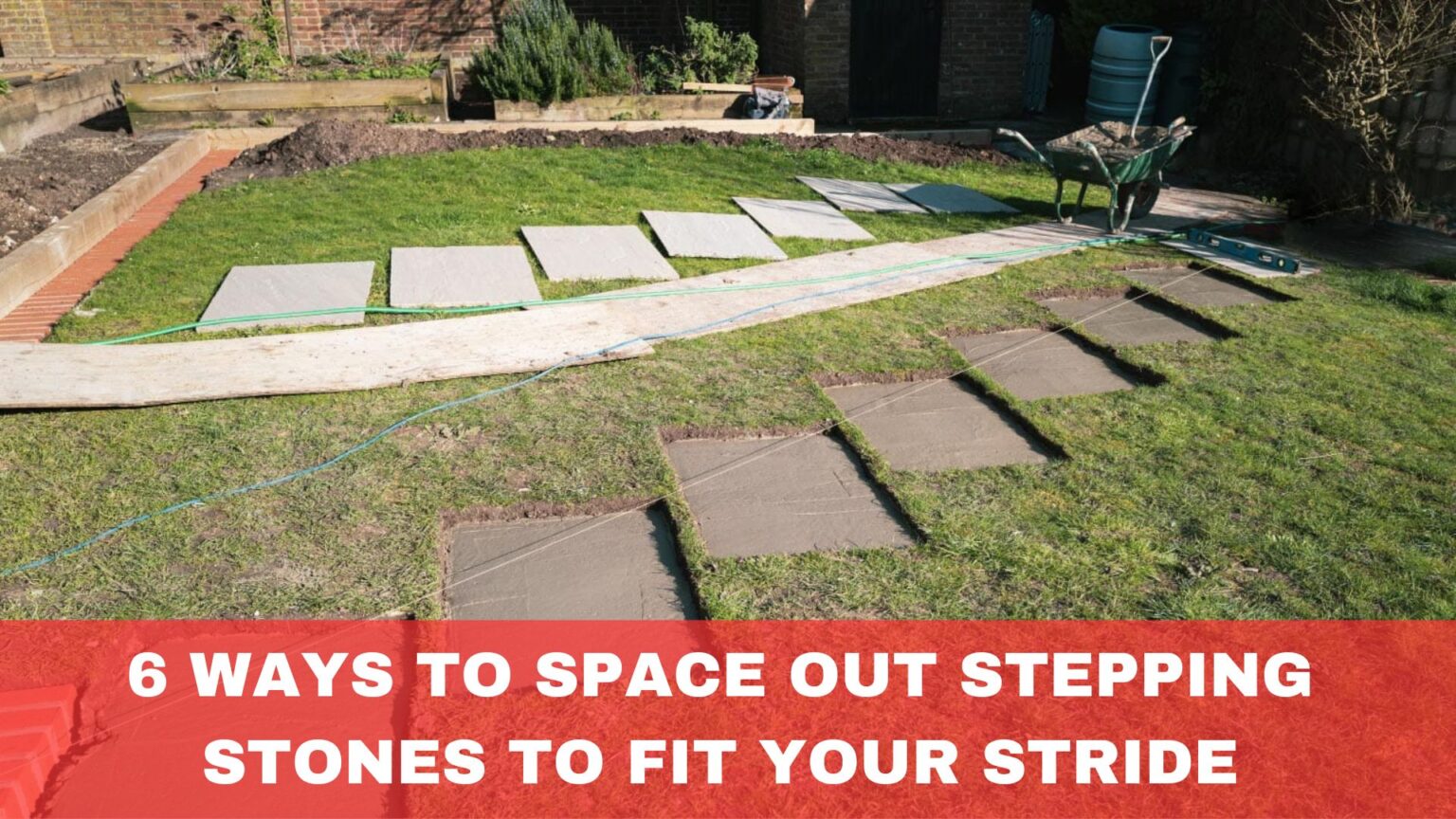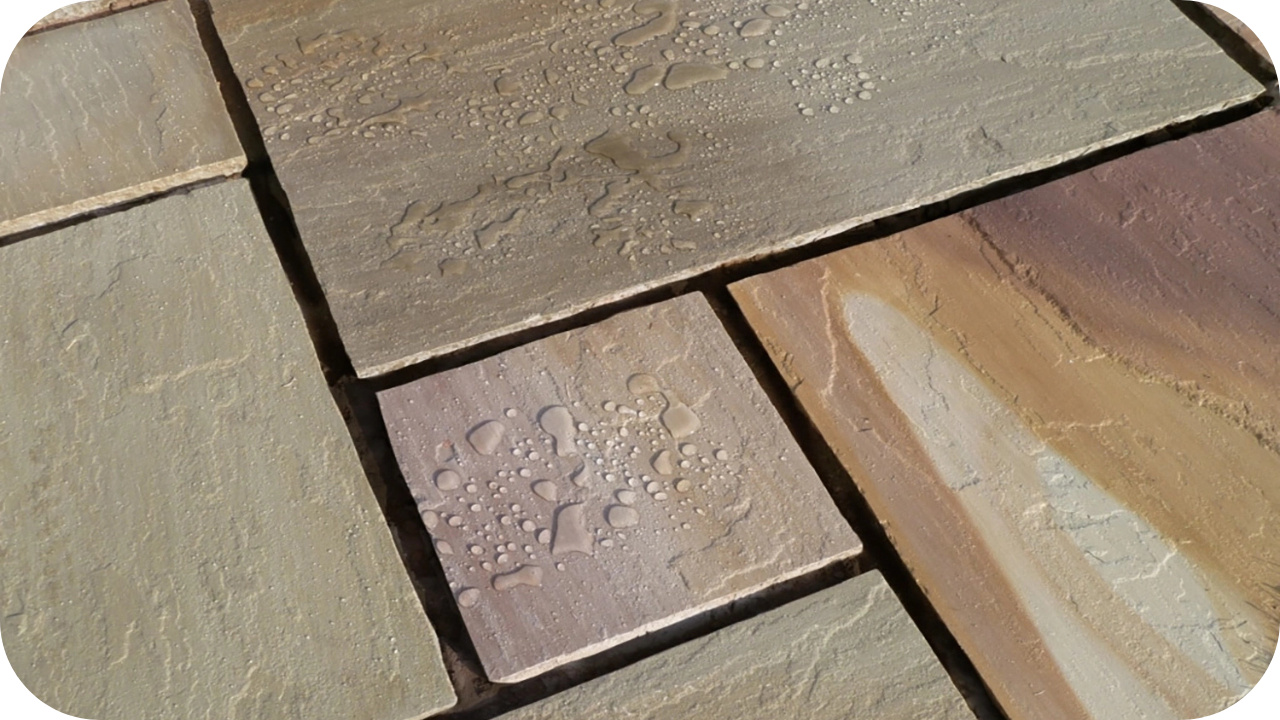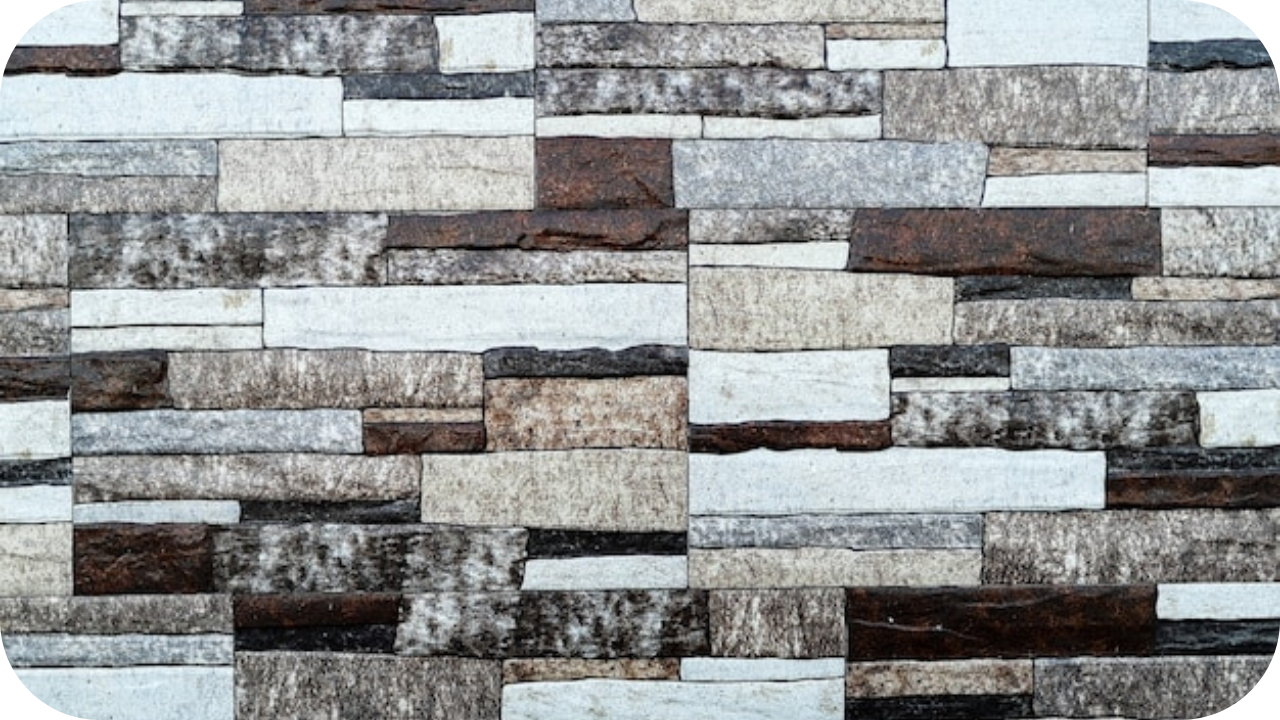
Struggling to space your stepping stones correctly can lead to an awkward, uncomfortable pathway. This disrupts the visual harmony of your garden and poses a tripping hazard, making every step a potential misstep.
Discover 6 simple and effective ways to space out stepping stones to perfectly fit your stride, ensuring a safe and aesthetically pleasing pathway for your outdoor space.
1. Understanding Stride Length
Correctly spacing stepping stones begins with understanding stride length, a critical factor that ensures comfort and safety on your pathway. Stride length is the distance between successive steps, measured from heel to heel. This distance varies among individuals due to height, leg length, and walking style.
To determine your stride length, walk naturally over a measured distance and count your steps. Divide the total distance by the steps to find your average stride length. For example, if you cover 10 metres in 12 steps, your stride length is approximately 0.83 metres.
Understanding this measurement helps in positioning the stepping stones at appropriate intervals. Too close together, the path becomes cramped and uncomfortable; too far apart can cause tripping or awkward strides. Stepping stones should be placed to match the average stride length of the path’s primary users.
Additionally, consider the terrain and purpose of the pathway. A garden path may have a more casual, varied stride, while a functional walkway requires uniform spacing. By understanding and applying the correct stride length, you can create a pathway that is both visually appealing and comfortable to walk on.
2. Measure Twice, Step Once
Accurate measurements are the cornerstone of correctly spaced stepping stones. Before laying any rocks, it’s essential to measure twice to ensure precision and avoid costly mistakes. As discussed earlier, start by determining the average stride length of the primary users. Once you have this measurement, mark the intended path with stakes and string, ensuring it follows the desired route and accounts for any curves or slopes.
Next, measure the distance between each stake, ensuring it matches the stride length. Use a tape measure for accuracy and mark the positions where each stepping stone will be placed. It’s crucial to double-check these measurements to ensure consistency and prevent any misalignment that could disrupt the walking flow.
If the path is irregular or features changes in elevation, consider adjusting the spacing slightly to accommodate natural walking patterns. Always prioritise comfort and safety, ensuring each step feels natural and secure.
By taking the time to measure twice and step once, you ensure a seamless, well-spaced pathway that enhances both the functionality and aesthetic appeal of your garden or outdoor space. This careful planning and precise measurement process will save you time and effort in the long run.
3. Balancing Aesthetics and Functionality
Creating a stepping-stone pathway that is both beautiful and practical requires a delicate balance between aesthetics and functionality. While the pathway’s visual appeal is important, it must also provide a comfortable and safe walking experience.
Start by considering the overall design and layout of your garden or outdoor space. Choose stepping stones that complement the existing landscape and match the style of your garden. Whether you prefer a natural, rustic look or a more formal, structured design, the stones should enhance the visual harmony of the area.
Next, focus on functionality. The spacing between stepping stones should align with the users’ average stride length, ensuring a natural and comfortable walk. Avoid placing the stones too close together, which can make the path feel cramped or too far apart, which can cause tripping hazards.
Additionally, consider the terrain and intended use of the pathway. For instance, a garden path may have a more relaxed spacing, allowing for a stroll, while a frequently used walkway might require more uniform spacing for efficiency and safety.
4. Creating a Natural Flow
Achieving a natural flow in your stepping stone pathway is essential for aesthetics and ease of use. A path with a natural flow guides the walker effortlessly, making each step feel intuitive and comfortable.
Start by laying out the pathway according to the landscape’s natural contours. Avoid rigid, straight lines unless the design specifically calls for them. Instead, opt for gentle curves and meanders that mimic natural paths. This approach enhances the visual appeal and creates a more relaxed and inviting walk.
When spacing the stones, consider the natural stride length of the primary users. Each stone should be placed at a comfortable distance to allow for a smooth transition from one to the next. For varied terrain, adjust the spacing to accommodate elevation or ground conditions changes, ensuring each step feels stable and secure.
Additionally, consider the surrounding environment. Integrate the stepping stones with existing features such as trees, shrubs, and flower beds, allowing the pathway to blend seamlessly with the landscape. This integration helps maintain a cohesive look and feel.
5. Safety First: Avoiding Tripping Hazards
Safety is paramount when designing a stepping-stone pathway. Poorly spaced or unevenly laid stones can create tripping hazards, posing a risk to anyone using the path. Ensuring safety involves careful planning and precise execution.
Start by ensuring each stepping stone is level with the surrounding ground. Uneven stones can cause trips and falls, especially in areas with heavy foot traffic. Use a spirit level to check that each stone is flat and stable.
Next, pay attention to the spacing. The distance between stones should match the average stride length of the primary users, allowing for a natural, comfortable walk. Stones placed too far apart can cause overreaching, while those too close together can create a cramped, awkward stride.
Additionally, consider the type of stone used. Choose stones with a non-slip surface to provide better traction, especially in wet or icy conditions. Textured stones or those with a rough finish are ideal for reducing the risk of slipping.
Finally, if the pathway is used at night, ensure it is well-lit. Adequate lighting helps to highlight each stepping stone, reducing the risk of accidents. Solar-powered path lights are excellent for illuminating your pathway without extensive wiring.
6. Experimenting with Patterns and Layouts
Experimenting with different patterns and layouts can transform a simple stepping-stone pathway into a captivating feature of your garden. Creative arrangements enhance visual appeal and provide opportunities to accommodate various stride lengths and walking preferences.
Begin by exploring traditional layouts such as linear, staggered, or random patterns. A linear layout offers a straightforward, formal look, ideal for more structured garden designs.
Staggered patterns, where stones are offset from each other, create a dynamic, engaging pathway that guides the walker smoothly around curves and bends. Random layouts provide a more natural, whimsical feel, perfect for informal garden settings.
Consider incorporating geometric shapes, such as circles, diamonds, or spirals, to add an element of surprise and interest. These patterns can break the monotony and draw attention to specific areas of your garden.
Mix and match different stone sizes and shapes to create a unique texture and visual rhythm. Larger stones can serve as focal points or resting spots, while smaller stones can fill gaps and maintain continuity.
When experimenting with layouts, always prioritise functionality. Ensure that the stones are spaced to fit the average stride length comfortably and that the path remains safe and easy to navigate.
Conclusion
Perfectly spaced stepping stones enhance both the beauty and functionality of your pathway. You can create an inviting and secure path by understanding stride length, measuring accurately, and balancing aesthetics with safety. Ready to transform your garden? Start planning your stepping stone layout today and enjoy a seamless, stylish walkway.
More To Explore

How to Tell If Stone Is Porous or Not
When selecting stone for your home or project, knowing whether it’s porous can make a huge difference. Porosity affects how your stone absorbs water, stains,

Split Face Stone: What It Is and When to Use It
Looking for a unique, durable material to elevate your next project? Split face stone might be the perfect choice. Known for its textured finish and


